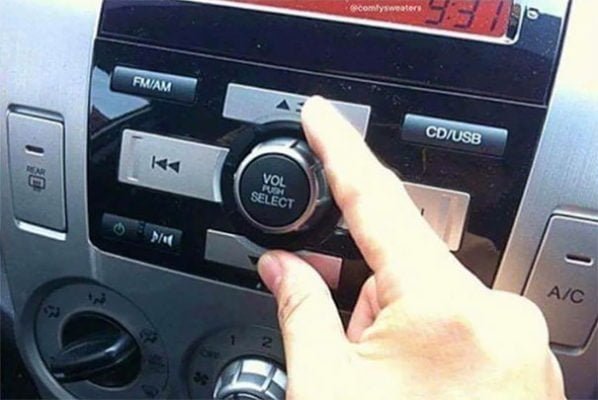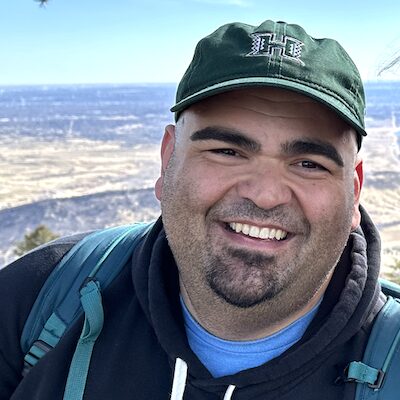Radio is still a special thing. Despite all of the hand-wringing and fear over what podcasts and streaming audio will do to the industry, all of the numbers say that the majority of listeners are still with us. The majority of ad dollars are still with us.

Does that mean we go back to what was business as usual in 1995? Of course not! But here is a question worth pondering: does radio know that radio is still more popular than digital audio or social media?
It sure doesn’t seem like it.
Brad Carson, program director of ESPN 92.9 in Memphis, told me that he views social media as a means to support what is happening on air. That has been valuable, particularly during the pandemic, when media was the only way most people had to be social.
“Last summer we saluted local high school seniors for the month of May in Memphis who had their season cut short due to COVID and made it an athletic celebration of sorts to brighten those student-athlete’s days shouting out them, their achievements, and their local school name. It wasn’t just on-air. It became part of all of those viral platforms because we married our on-air audio from the salute moment with images of the students. And we needed that last May because major league and college sports games vanished for a brief moment.”
He thinks that all social media is worth understanding. I’m not sure I totally agree with that, but Carson’s point is that if you make time to understand something like TikTok or figure out the most relevant content for Instagram, it expands your reach beyond the target demo.
But isn’t the target demo where we put most of our eggs in media? Certainly when sales reps hit the street they are telling the story of the station’s performance with target demos. Does it make more sense to try to pick up a little bit from every age group by stretching a social strategy as far as you can or should a station focus on the platforms that deliver the highest number of 35-54 year old men?
Brian Long, program director of XTRA 1360 FOX Sports San Diego, has built a social media strategy for his station based on what makes sense for his audience and what his station can make the most use of.

“Twitter is by far the most easily integrated with terrestrial news & sports,” he told me. “I also think Facebook and FB Live plays well with the older demo, but certainly not something that has the immediate impact of Twitter.”
I asked Long what he thought the best case scenario was for the performance of a radio show’s replay podcast. To him, it was an example of investing in things that are worth investing in. That doesn’t mean you don’t offer on demand replays. It means those are not the digital products you expect to draw the interest of your already dedicated listeners.
“I’ve found most traditional radio shows that develop a podcast that is slightly different from the daily show seem to cut thru better. The goal should be to try and give the listeners an experience that is unique.”
The opinion echoes something Joe Ovies told me earlier this year when he explained to me why he prefers to release best of podcasts instead of full show replays. The afternoon host on 99.9 the Fan in Raleigh told me that what makes radio special is the spontaneity of what happens live. That is something you cannot get on a podcast. If a station is going to invest time in creating a digital strategy and podcasts are a huge part of it, don’t you need to make sure all of your audio is special? You can’t recreate live on a podcast. Likewise, your podcast isn’t doing anything for you if it is the exact same thing listeners get on radio.
Carson reiterates that he doesn’t think radio companies’ emphasis on technology and digital platforms has to be viewed as a problem. Just look at his relationship with video.
Brad Carson puts out a video every single day on his social media platforms. It is him staring into the camera and talking about what is going on in his city and at his station. Usually all of that is happening while his dog licks his face.
For Carson, the videos are about building and supplementing the connection he and his staff have created over the airwaves.
“Whether it’s in the form of Twitch, video clips in-studio, Zooms, FB Live, Instagram live, or daily talent videos, we have found that it’s important to use video to connect,” he told me via email. “Think about it. During the pandemic, THAT IS the appearance. The pandemic seemingly has taught us the importance of RADIO.COM, smart speakers, and social. Video is part of those.”
He made it clear to me that the digital platforms should not interfere with the way radio companies think about what goes out over the airwaves. When I tell him that radio needs to do a better job of showing how silly the “radio is dying” narrative is, he takes things one step further.
“It’s definitely not dying. Frankly, I’ve been in radio for over 25 years and I’m not kidding when I tell you it’s the best I’ve ever felt about our industry. ESPECIALLY Sports.”
Long agrees. In fact, it never really dawned on him that focusing on a digital and social strategy could be conceived as sending a message that radio doesn’t know its platform’s own value. A digital strategy is just the 2021 version of trying to do what radio has always tried to do: be where the people looking for information are.
“The reality is long gone are the days of waiting for the newspaper to arrive on your door step or waiting for a radio show to begin to get up to date,” Long says. “People expect information as it’s happening. Social has the best chance of delivering that.”
Brad Carson acknowledges that everyday a new digital competitor to local radio pops up. Entertainment encompasses such a wide swath of options that it will always be a crowded field, but radio isn’t going to be lost in it.
“Yes, there are a lot folks not in radio starting podcasts, launching beats to cover teams for internet only companies, the dying newspaper industry, or the TV sports people who get a minute at night on the local news that’s DVR’d. Those things are great, but radio has a massive advantage over all of them because we can leverage the most listened to medium in the country and expand into those areas in unique and special ways because of our local talent,” he says.

Radio is a unique medium and sometimes it is easy to wonder if the people at the top realize that. ESPN has rebranded their offerings in the space as “ESPN Audio,” and that is a more accurate reflection of the way they approach the business now. It certainly makes sense to use other media to supplement the business you have established using the terrestrial airwaves. Too often though, it feels like radio companies are focusing on those other media and losing sight of facts like radio’s widespread familiarity and accessibility because it is something we know how to do well.
The need to learn a new platform can often create a warped sense of its place in your organization’s hierarchy. The radio business cannot ever lose sight of the fact that for us, the old fashioned broadcast has to remain on top. Everything else we do should serve it!

Demetri Ravanos is a columnist and features writer for Barrett Media. He is also the creator of The Sports Podcast Festival, and a previous host on the Chewing Clock and Media Noise podcasts. He occasionally fills in on stations across the Carolinas in addition to hosting Panthers and College Football podcasts. His radio resume includes stops at WAVH and WZEW in Mobile, AL, WBPT in Birmingham, AL and WBBB, WPTK and WDNC in Raleigh, NC.
You can find him on Twitter @DemetriRavanos or reach him by email at DemetriTheGreek@gmail.com.







